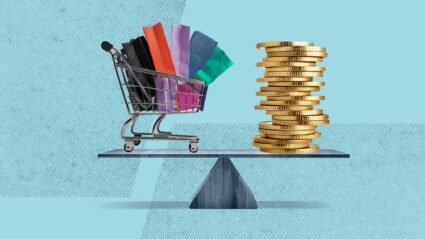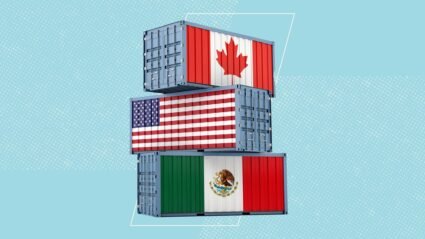The final boss of advertising is upon us: Super Bowl LV. Brands have one chance every year to get in front of those millions upon millions of eyes, all watching the game live, and make their case, make ‘em laugh, or otherwise grab attention in just 30 seconds of creative genius.
But this year, some Super Bowl ad giants won’t be showing up with multimillion-dollar in-game ads when the Kansas City Chiefs face the Tampa Bay Buccaneers on Feb. 7. In fact, beverage makers Anheuser-Busch, Coca-Cola, and PepsiCo—along with automaker Hyundai and Avocados From Mexico—are all benching their star players from in-game commercials during this already unprecedented pandemic NFL championship.
So why are these all-star brands taking a timeout from one of the most-watched TV events of the year? Their parent companies claim to be shuffling their playbooks for several reasons: while some brands are reallocating ad spend toward values-based branding initiatives, others are reevaluating how to use those millions to achieve more measurable performance results.
So what can you learn from the Super Bowl ad-pocalypse of 2021 that can help ensure you’re making the best marketing decisions for your business?
Brandstanding: Embrace social responsibility to create meaningful customer connections
Anheuser-Busch, parent company to iconic beer brands like Budweiser and Michelob, is foregoing its traditional in-game Super Bowl airtime, planning to use that money to boost COVID-19 vaccine awareness instead. While the company wouldn’t give an exact dollar amount, a spokesperson told MarketWatch that the total donation to vaccine education and awareness will be on par with the cost of running an in-game ad, calling it a “multimillion-dollar commitment.”
This will be the first Super Bowl in 37 years without an in-game Budweiser commercial. And it’s the first time in 20 years that neither Coke nor Pepsi bought an in-game Super Bowl ad for their marquee brands.
While Anheuser-Busch’s decision sent shockwaves through the ad industry (and fans of Clydesdales everywhere), it follows one of the key marketing trends in 2021: brandstanding. More and more consumers are digging into not just what brands say they stand for, but whether they’re actually doing something to support those values.
Not only are consumers increasingly loyal to brands that support social causes they care about, they’re less likely to buy from those that don’t.
In fact, 68% of US adults believed brands should speak up and take part in social causes, according to Mindshare.
Anheuser-Busch is getting all kinds of positive headlines for the choice they’re making—and that can help even an enormous, established brand like the beer giant curate a new generation of loyal customers. According to the Inspiring Purpose-led Growth survey, brands with a purpose at their core grow at a rate more than twice as fast as those without (175% vs. 70%).
Brandstanding will intensify in 2021, as competition for values-driven customers skyrockets. However, in an era of “cancel culture” and polarized media, companies must also understand the risks. Here’s what marketers should do:
- Always be authentic: Don’t jump on the bandwagon to support a cause just because everyone else is doing it, or because it might make you look good in the moment. Whether it’s equality, climate change, inclusion, or another purpose-driven stand, make sure your message flows authentically from your brand’s mission and aligns with your core values.
- Back up your words with actions: 60% of US consumers thought brands who spoke out against social causes, but didn’t take any action, were merely being opportunistic, according to a Mindshare survey. Consumers want brands to speak out but are quick to sniff out disingenuousness. Companies that back up their words with concrete actions are more likely to make a lasting impact and win support.
- Know your audience and what they care about most: Brands that understand their core customers are better positioned to take bold risks. For example, when Nike unveiled its “Dream Crazy” campaign featuring Colin Kaepernick in 2018, it expected some amount of criticism. But by knowing their core audience (diverse consumers under the age of 35), Nike correctly predicted the campaign’s success, which won them an Emmy and got them trending on social media with over 5.2 million mentions in 72 hours. While the initial outrage cost Nike some customers, the move sealed its relationship with a much larger, still-expanding customer base.
- Expect backlash, but stay the course: Brands that take stands are expected to face backlash from cynics, critics, and internet trolls. Support for issues deemed “too liberal” will repel conservatives, while proclamations that seem disingenuous may prompt progressives to call your bluff. But stay the course and listen to your audiences and those directly affected to adapt your messaging and learn to be a better brand ally: even brands that initially stumble or miss the mark will ultimately end up in a better place than those that stay silent.
Traditional vs. digital marketing: where should your ad dollars be spent?
The pandemic is raising some questions for brands about the potential return on investment (ROI) of an in-game Super Bowl commercial, which is still the priciest advertising real estate in US media.
The price for a 30-second slot is expected to reach $5.6 million this year, according to Kantar Media. This is up 7% from last year which held the previous all-time record.
For brands sitting out this year’s game, it’s not so much about a reduction in spending but shifting how those ad dollars are spent.
For the Super Bowl, we’re already seeing a lot more digital campaigns, experiential marketing, and social sweepstakes come into play. Here’s a preview of how some brands are celebrating Super Bowl 55—without airing traditional in-game ads:
- Budweiser is expected to produce a digital Super Bowl spot that will be promoted online, while Corona is soliciting fans through their #RomoReplacement campaign, which issues a call for hotline operator auditions through a series of spots that will go live across digital, social media, and TV nationally this week.
- Brands like Frank’s RedHot partnered with Eli Manning and TikTok star David Dobrik to launch The Big Pour campaign, asking fans on social media to use the hashtag #FranksBigPour ahead of the game. If the hashtag achieves 100,000 tweets, fans will get to see Manning pour 100 gallons of hot sauce on Dobrik on social media.
- Car brand Volvo expanded its Volvo Safety Sunday campaign with a pledge to give away $2 million worth of cars (up from $1 million in 2020) by randomly selecting recipients who design and submit their dream car on their website.
It’s clear that traditional brand marketing, even during one of the biggest advertising events of the year, is no longer sufficient—and the need for effective, actionable, and measurable performance across digital and social channels is only increasing.
Cue performance branding swooping in and saving the day!
Performance branding drives digital transformation from the inside out. It reimagines the old-school marketing approach, collapsing silos and creating a cohesive brand experience that aligns marketing goals back to business objectives.
By marrying the functional, highly measurable aspects of performance marketing (such as digital ads on Google and Facebook) with high-impact branded content, you can unlock the full-funnel potential for your marketing through a unified strategy that maximizes long-term profitability for your brand.
Make the magic happen: The basic framework for performance branding
As we all know, there is never a ‘one size fits all’ solution to any marketing challenge, which is why we’ve developed a flexible framework to help marketers integrate performance branding initiatives into their marketing mix.
- Set the foundation: Start by layering in a tracking framework to leverage performance KPIs within existing upper funnel initiatives
- Experiment with branding for the future: Systematically replace older campaigns, starting with the least effective
- Accelerate to scale: Connect the dots for personalization and machine learning capabilities
Remember that your performance branding process shouldn’t be looked at as a one-time sprint; it’s an ongoing loop with room for constant improvement.
Essential attributes of a successful performance branding strategy
Maximizing the full potential of performance branding requires a fundamental shift in marketing practices toward greater precision and agility. Key elements of this shift include the following:
- First-party data and a single source of truth that everyone agrees on
- A strong first-party data strategy starts with building out a customer-data platform (CDP) that incorporates data directly from your customers in a compliant fashion. Your CDP needs to be developed and managed by a trusted team that can oversee the integrity of customer data as a single source of truth for your business to give you a unified organizational view of your customers.
- Agile marketing to respond to customer needs in real-time
- Agility allows teams to both make quick tactical decisions and incorporate learnings to continuously improve offers. Marketers need to pursue a rigorous test-and-learn methodology to ensure that new insights based on changes in technologies and consumer behavior are fed into upper-funnel performance branding initiatives.
- Holistic integration of “performance” and “branding”
- Performance branding isn’t here to replace traditional TV advertising; instead, it’s a way to revitalize it. By putting objective, real-time, measurable KPIs in place for brand marketing campaigns, we can better understand performance and sync traditional campaigns with digital campaigns. Tearing down these silos will ultimately unlock new growth opportunities for brands to reach their true potential.







Responses